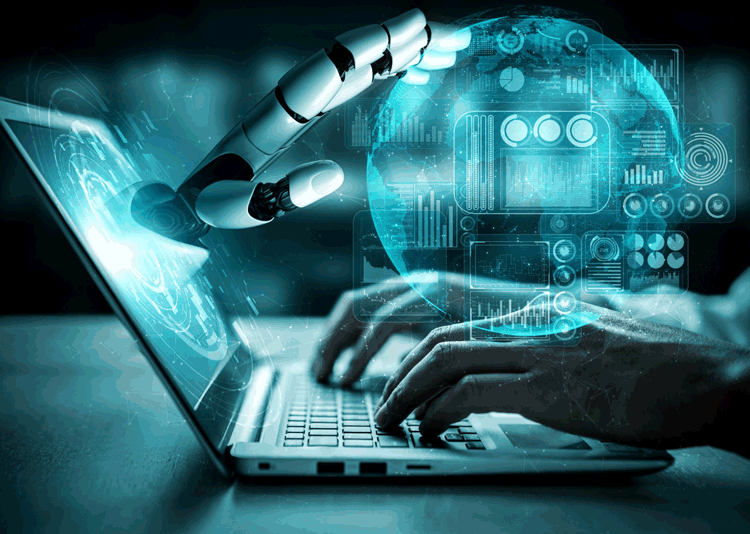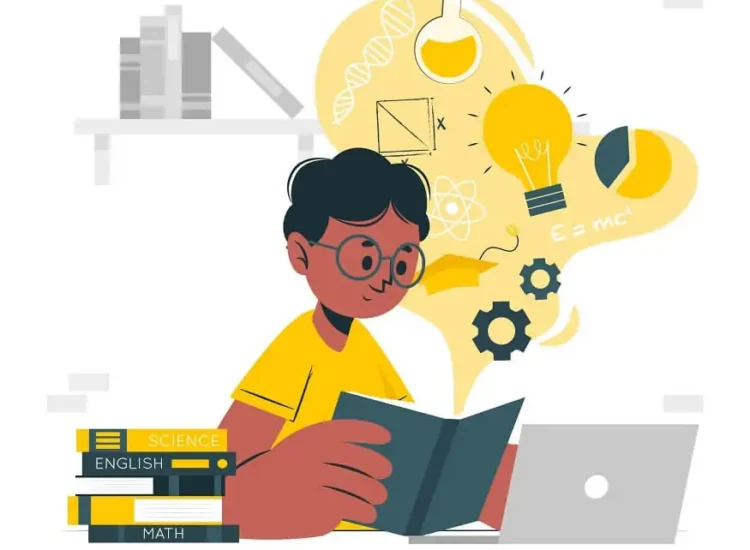Generative Artificial Intelligence: Reshaping Creativity, Industry, and the Future
In recent years, the field of Artificial Intelligence (AI) has experienced breakthroughs that have captured the world’s imagination. While AI has long been adept at analyzing data, recognizing patterns, and making predictions, a new frontier has emerged: the ability for AI to create. This capability is driven by Generative Artificial Intelligence, a powerful subset of AI focused on generating novel content, from realistic images and compelling text to intricate code and synthetic data. Unlike traditional discriminative AI, which learns to classify or identify based on existing data, generative AI learns the underlying patterns and structures of data to produce entirely new examples that mimic the characteristics of the training data but are not mere copies.
Toc
The rise of generative artificial intelligence has moved rapidly from academic research into practical applications, sparking widespread discussion about its potential, its implications, and its future trajectory. Tools powered by generative artificial intelligence are already changing how we work, create, and interact with information. They promise to unlock unprecedented levels of creativity, automate complex tasks, and drive innovation across nearly every sector imaginable. Understanding generative artificial intelligence is no longer confined to the realm of technologists and researchers; it is becoming essential knowledge for businesses, educators, policymakers, and individuals seeking to navigate the rapidly evolving digital landscape. This article will delve into the core technologies that power generative artificial intelligence, explore its diverse and growing range of applications, and discuss the significant implications and challenges that accompany this transformative technology. We will unpack what makes generative artificial intelligence so revolutionary and what it means for the future.
The Foundations: Understanding the Technology Behind Generative Artificial Intelligence
At its core, the power of generative artificial intelligence stems from sophisticated machine learning models trained on vast datasets. These models learn the complex distributions and relationships within the data, enabling them to generate new outputs that share the statistical properties of the training examples. It’s not simply about stitching together existing pieces; it’s about learning the rules of creation and applying them to produce something entirely original. Exploring the underlying technology helps demystify how these remarkable capabilities are achieved and highlights the computational muscle required.

Understanding the Core Concepts: How AI Learns to Create
The fundamental principle behind generative artificial intelligence is its ability to learn a representation of data. Imagine teaching a machine about human faces. A discriminative AI might learn to identify if a given image is a face. A generative artificial intelligence model, however, learns the intricate interplay of features – the average distance between eyes, the shape of noses, the texture of skin – such that it can generate a brand new face that never existed before, yet looks entirely plausible. This is achieved by training the model on a massive collection of existing faces, allowing it to internalize the vast space of possible facial variations.
This learning process involves identifying patterns, correlations, and underlying structures within the training data. For text generation, the model learns grammar, syntax, style, factual information, and even nuanced context from billions of words. For image generation, it learns shapes, colors, textures, lighting, and the composition of objects from countless images. The model essentially builds an internal, statistical “world model” based on the data it consumes. When prompted, it samples from this learned distribution to produce a novel output that is consistent with the patterns it has observed. The quality and creativity of the output are heavily dependent on the size and diversity of the training data, as well as the architecture and scale of the model itself. The process of learning to create is distinct from learning to classify, requiring different algorithmic approaches and computational resources, marking a significant evolution in the capabilities of artificial intelligence. This ability to synthesize new, coherent, and often surprisingly realistic or creative outputs is what defines generative artificial intelligence and sets it apart from previous generations of AI systems.
Key Model Architectures: From GANs to Transformers
The field of generative artificial intelligence has seen the development of several key model architectures, each with its strengths and applications. Early influential models included Generative Adversarial Networks (GANs) and Variational Autoencoders (VAEs), while recent breakthroughs, particularly in text and image generation, have been dominated by the Transformer architecture and Diffusion Models.
Generative Adversarial Networks (GANs), introduced in 2014, were a significant step forward. A GAN consists of two neural networks: a generator and a discriminator. The generator attempts to create new data (e.g., images), while the discriminator tries to distinguish between real data from the training set and fake data created by the generator. These two networks are trained in a competitive, adversarial process. The generator gets better at creating realistic data to fool the discriminator, and the discriminator gets better at detecting fakes. This competition drives both networks to improve, resulting in generators capable of producing highly realistic synthetic data, especially images. GANs have been influential but can be challenging to train stably.
Variational Autoencoders (VAEs) are another class of generative models. They work by encoding input data into a lower-dimensional “latent space” and then decoding this representation back into the original data format. VAEs are good at learning compressed representations and can generate new data by sampling from the latent space and decoding. While effective, VAEs often produce outputs that are blurrier or less sharp compared to GANs or later models for certain tasks, particularly image generation.
The Transformer architecture, introduced in 2017, revolutionized sequence-to-sequence tasks, most notably in Natural Language Processing (NLP). Unlike previous models that processed text word by word sequentially, Transformers can consider all words in a sequence simultaneously using an “attention mechanism.” This allows them to understand context and relationships across long sequences of text much more effectively. Large Language Models (LLMs) like the GPT series, which are prominent examples of generative artificial intelligence for text, are built upon the Transformer architecture, scaled to unprecedented sizes and trained on massive amounts of text data. This architecture’s ability to handle long-range dependencies in data proved crucial for generating coherent, contextually relevant, and fluent human-like text.
More recently, Diffusion Models have gained prominence, particularly excelling in image generation. These models work by gradually adding random noise to an image until it becomes pure noise, and then learning to reverse this process – starting from noise and iteratively removing it to reconstruct a clear image. By learning this denoising process, the model can start from random noise and generate entirely new, high-quality images. Diffusion models are behind some of the most impressive recent text-to-image generation systems. They offer high-quality output and training stability compared to some previous approaches.
The evolution of these architectures represents a journey of finding more effective ways for AI to learn and represent complex data distributions, leading directly to the sophisticated creative capabilities we see in modern generative artificial intelligence. Each architecture has contributed unique insights into the mechanisms of AI creation.
Training Generative Models: Data, Compute, and Scale
Training effective generative artificial intelligence models is a monumental undertaking, requiring vast amounts of high-quality data, immense computational power, and significant time and expertise. The scale of these requirements is one of the primary reasons why the development of the most powerful generative models has largely been concentrated in large research labs and technology companies.
The first critical component is data. Generative artificial intelligence models learn by observing patterns in their training data. To generate diverse and realistic outputs, they need to be exposed to massive datasets covering a wide range of examples. For text models, this means training on petabytes of text from books, websites, articles, and code repositories. For image models, it involves billions of images paired with descriptive captions. The quality, diversity, and size of this data directly impact the model’s capabilities and can also introduce biases if not curated carefully. Gathering, cleaning, and preparing these datasets is a complex and time-consuming process.
The second essential component is computational power. Training large generative models, especially deep neural networks like large Transformers or Diffusion Models, involves billions or even trillions of parameters that must be adjusted through iterative training processes. This requires immense computational resources, typically leveraging thousands of powerful Graphics Processing Units (GPUs) or Tensor Processing Units (TPUs) working in parallel for weeks or months. The energy consumption and cost associated with this level of computing are substantial, presenting both economic and environmental considerations. These models are trained on massive clusters of specialized hardware located in state-of-the-art data centers.
The third factor is time and expertise. Designing, building, training, and fine-tuning these complex models requires teams of highly skilled AI researchers and engineers. The training process involves carefully setting hyperparameters, monitoring performance, and making adjustments. Debugging and optimizing these large-scale systems are significant challenges. The time required for training can range from days for smaller models to months for the largest and most advanced ones, followed by further time needed for fine-tuning and deployment.
The sheer scale of data and compute required means that access to this infrastructure is a major factor in advancing the state-of-the-art in generative artificial intelligence. It highlights that while the models themselves are algorithmic, their realization into powerful tools is deeply tied to physical infrastructure and significant investment. Understanding these resource requirements provides context for the capabilities and limitations of current generative artificial intelligence systems and offers insight into the challenges of developing even more advanced models in the future. The training process is where the potential of the architecture meets the reality of data and compute, forging the creative engines of modern AI.
Applications and Capabilities of Generative AI: From Text to Imagination
The theoretical underpinnings of generative artificial intelligence translate into a breathtaking array of practical applications that are already impacting various fields. These models are not just academic curiosities; they are becoming powerful tools that augment human capabilities, automate tasks, and unlock new forms of creativity. From crafting compelling narratives to visualizing entirely new concepts, the capabilities of generative artificial intelligence are rapidly expanding.

1. https://xedap468.com/mmoga-virtual-private-server-windows-10-the-ultimate-guide/
3. https://xedap468.com/mmoga-find-the-best-woocommerce-hosting-for-your-online-store-in-2024/
5. https://xedap468.com/mmoga-the-ultimate-guide-to-vps-virtual-private-servers-for-e-commerce/
Text Generation and Natural Language Processing
Perhaps the most widely visible application of generative artificial intelligence today is in the realm of text generation, powered primarily by Large Language Models (LLMs). These models have demonstrated an astonishing ability to produce human-quality text on a vast range of topics and in various styles. Their applications in Natural Language Processing (NLP) are transforming how we interact with and create textual content.
At its core, text generation involves predicting the next word or sequence of words based on the preceding context and the patterns learned during training. However, the scale and sophistication of modern LLMs allow them to go far beyond simple prediction. They can write articles, essays, stories, poems, and scripts that exhibit coherence, creativity, and contextual understanding. They can draft professional emails, marketing copy, and reports, saving significant time and effort. The ability of generative artificial intelligence to produce fluent and relevant text is proving invaluable in content creation workflows across industries.
Beyond generating original text, these models excel at tasks like summarization, condensing long documents into concise summaries while retaining key information. They are powerful tools for translation, breaking down language barriers by converting text from one language to another with increasing accuracy and fluency. Furthermore, LLMs are proving to be incredibly useful assistants for writers, helping to brainstorm ideas, generate outlines, refine phrasing, and check grammar and style. This partnership between human creativity and generative artificial intelligence is amplifying productivity in countless writing-intensive tasks.
Another significant application is in generating code. Code generation models, often specialized versions of LLMs, can write code snippets, complete functions, and even generate entire scripts in various programming languages based on natural language descriptions. This capability is accelerating software development, helping developers write code faster and potentially reducing the barrier to entry for new programmers. Conversational AI, such as chatbots and virtual assistants, is also being revolutionized by generative artificial intelligence, enabling more natural, engaging, and contextually aware interactions. The ability of generative artificial intelligence to understand and generate human language is fundamentally changing how we communicate with computers and create written content.
Image and Multimedia Creation
Beyond text, generative artificial intelligence has made stunning progress in the creation of visual and other multimedia content. Text-to-image generation, powered by models like Diffusion Models, has moved from generating abstract or distorted images to producing incredibly realistic and artistic visuals based purely on text prompts.
Users can simply describe an image they envision – “an astronaut riding a horse on the moon in a photorealistic style,” or “a watercolor painting of a serene forest with mystical light” – and the generative artificial intelligence model can bring that concept to life visually. This capability is transforming fields like graphic design, illustration, and concept art, allowing creators to rapidly iterate on visual ideas and generate unique assets. It lowers the barrier to creating high-quality visuals, empowering individuals and small businesses without access to traditional design resources.
The capabilities extend beyond static images. Generative artificial intelligence is also being explored for video generation, creating short video clips from text descriptions or existing images, although this is still an area of active research and development. Similarly, AI models are being used to generate audio, including music compositions in various genres, realistic speech in different voices, and sound effects. These tools are opening up new possibilities for musicians, sound designers, and content creators, allowing for rapid prototyping and the creation of unique audio experiences.
Furthermore, generative artificial intelligence is enhancing traditional multimedia editing. AI tools can automatically fill in missing parts of an image (inpainting), remove unwanted objects, change the style of an image or video, or even generate entirely new scenes based on existing footage. These capabilities are making complex editing tasks more accessible and enabling new forms of visual storytelling. The ability of generative artificial intelligence to create and manipulate visual and auditory content is expanding the toolkit of creators and changing the economics of content production across entertainment, marketing, and design.
Expanding Creativity and Innovation
While generating content is a direct application, the impact of generative artificial intelligence extends to augmenting and expanding human creativity and driving innovation in less obvious ways. These AI tools can serve as powerful collaborators, breaking down creative blocks and exploring possibilities that humans might not have considered.
In creative fields, generative artificial intelligence can assist with brainstorming by generating numerous variations of an idea, character concepts, plot points, or design motifs. A writer struggling with a scene can ask an LLM for suggestions. A designer looking for inspiration can generate hundreds of image variations based on a theme. This collaborative process can spark new ideas and accelerate the initial stages of creative work. It shifts the creative process from solely generating ideas from scratch to curating, refining, and building upon AI-generated starting points.
Beyond traditional art and media, generative artificial intelligence is proving valuable in scientific research and innovation. In drug discovery, generative models are being used to design novel molecular structures with desired properties, accelerating the search for new therapeutics. In material science, AI can propose new material compositions. In engineering, generative models can be used to optimize designs or simulate complex systems. By rapidly generating and evaluating potential solutions or scenarios, generative artificial intelligence is speeding up the pace of discovery and innovation in complex scientific domains.
Furthermore, generative artificial intelligence can help in creating synthetic data. For tasks where real-world data is scarce, sensitive, or expensive to obtain, generative models can create artificial datasets that mimic the properties of real data. This synthetic data can then be used to train other AI models, particularly in areas like healthcare, finance, or autonomous driving, where privacy and data availability are critical concerns. This application of generative artificial intelligence is enabling progress in AI development even in data-constrained environments.
The role of generative artificial intelligence is evolving from merely creating content to becoming a partner in the creative and discovery process. By providing new starting points, exploring vast possibility spaces, and automating tedious generation tasks, these AI systems are empowering humans to push the boundaries of what’s possible in art, science, and technology. The ability to quickly generate variations and ideas allows for more experimentation and a faster path from concept to realization, making generative artificial intelligence a true catalyst for innovation.
Implications, Challenges, and the Future of Generative Artificial Intelligence
The rapid advancements and widespread applications of generative artificial intelligence bring with them profound implications for society, industry, and the economy. While the potential benefits are immense, there are also significant challenges related to ethics, regulation, and societal adaptation that must be carefully considered and addressed as this technology continues to evolve. Looking ahead, the future landscape of generative artificial intelligence promises further integration, increased sophistication, and potentially even more transformative capabilities.

Transforming Industries and Workflows
Generative artificial intelligence is not confined to a single sector; its ability to create diverse content makes it a powerful tool for transformation across numerous industries, reshaping workflows and creating new business models.
In marketing and advertising, generative AI is revolutionizing content creation. Marketers can use LLMs to draft ad copy, email campaigns, and social media posts in minutes. Image generation models can create custom visuals for campaigns without the need for stock photos or extensive photoshoots. This accelerates content pipelines and enables highly personalized marketing at scale.
The software development lifecycle is being significantly impacted. Code generation tools assist developers in writing code, debugging, and testing. This can increase productivity, reduce development time, and allow developers to focus on more complex architectural challenges rather than repetitive coding tasks.
In the design industry (graphic design, product design, fashion), generative AI aids in concept exploration and iteration. Designers can generate numerous variations of logos, product shapes, or fashion items based on initial ideas, speeding up the creative process and exploring a wider design space.
The media and entertainment sectors are leveraging generative AI for scriptwriting assistance, concept art generation, creating synthetic voiceovers, and even generating short video sequences. This can lower production costs and timelines, and enable new forms of digital content creation.
2. https://xedap468.com/mmoga-the-ultimate-guide-to-vps-virtual-private-servers-for-e-commerce/
3. https://xedap468.com/mmoga-the-best-cloud-file-hosting-for-small-businesses-in-2024/
In education, generative AI can help create personalized learning materials, generate quizzes, and provide tailored explanations of complex topics, potentially adapting content to individual student needs and learning styles.
Even in sectors like healthcare, generative AI is being explored for generating synthetic patient data for research and training models, or for assisting in the design of new proteins or drug compounds. In finance, it can be used for generating synthetic transaction data for fraud detection model training or for generating natural language summaries of financial reports.
The transformative power of generative artificial intelligence lies in its ability to automate creative and knowledge-work tasks that were previously considered exclusively human domains. This automation can lead to significant efficiency gains, cost reductions, and the ability to scale personalized content creation across a wide range of industries. The key is often in augmenting human roles rather than simply replacing them, allowing humans to focus on higher-level strategy, creativity, and critical judgment while AI handles the generative heavy lifting.
Ethical Considerations and Challenges
Despite its immense potential, the rise of generative artificial intelligence is accompanied by significant ethical considerations and challenges that require careful attention from developers, users, policymakers, and society as a whole. Addressing these issues is crucial for ensuring that generative AI is developed and used responsibly for the benefit of humanity.
One of the most pressing concerns is the potential for generating and spreading misinformation and disinformation. Highly realistic text, images, audio, and even video (deepfakes) can be generated at scale, making it difficult to distinguish between authentic and synthetic content. This poses risks to public trust, democratic processes, and individual reputations. Developing robust detection methods and promoting digital literacy are essential counter-measures.
Bias present in the training data can be reflected and even amplified in the outputs of generative artificial intelligence models. If a model is trained on data that reflects societal biases, it may generate text or images that are discriminatory, perpetuate stereotypes, or unfairly represent certain groups. Ensuring diverse and representative training data and developing methods to detect and mitigate bias in generative outputs are critical.
Copyright and intellectual property issues are complex and rapidly evolving. When generative models are trained on vast datasets that include copyrighted material, questions arise about whether the output constitutes a derivative work and who owns the copyright to AI-generated content. Furthermore, the use of generative AI by individuals to create works in the style of living artists or writers raises ethical and legal questions. Clear guidelines and legal frameworks are needed to navigate this new landscape.
The potential for job displacement in creative and knowledge-based industries is another significant concern. As generative AI becomes more capable of performing tasks like writing, design, and coding, it may impact the roles of human professionals in these fields. While AI is also expected to create new jobs related to AI development, deployment, and oversight, there is a need for societal planning, education, and reskilling initiatives to help individuals adapt to the changing job market.
Other challenges include security risks (e.g., using generative AI for malicious purposes like phishing or creating harmful content), environmental impact (the significant energy consumption of training large models), and the risk of over-reliance or a decline in human skills if AI tools are used without critical thinking or human oversight. Addressing these challenges requires ongoing dialogue, research, policy development, and a commitment to ethical AI principles.
The Future Landscape: Evolution and Potential
The field of generative artificial intelligence is evolving at a breakneck pace, and predicting the exact future is challenging. However, several trends and potential developments suggest an even more integrated, sophisticated, and powerful future for this technology.
We can expect generative models to become more capable and versatile. Future models will likely handle multiple modalities seamlessly, understanding prompts and generating content that combines text, images, audio, and potentially even 3D models or interactive experiences (multimodal AI). This could lead to truly integrated creative tools and more immersive AI interactions.
Efficiency and accessibility are likely to improve. While current large models require significant compute, research is ongoing to create smaller, more efficient generative models that can run on less powerful hardware, potentially even on edge devices. This would make generative artificial intelligence more accessible and enable new types of applications.
Personalization will become more refined. Future generative AI systems may be able to adapt their style, tone, and content to individual user preferences or needs more effectively, creating highly personalized experiences, whether in education, entertainment, or productivity tools.
The integration of generative artificial intelligence into existing software and workflows will continue and deepen. Expect to see generative capabilities built directly into word processors, design software, coding environments, search engines, and operating systems, making AI assistance a ubiquitous part of our digital lives.
The relationship between humans and generative artificial intelligence is also likely to evolve. Rather than seeing AI as a replacement, the focus will increasingly be on human-AI collaboration, where AI acts as a co-creator, assistant, or tool that augments human ingenuity and productivity. This partnership could unlock entirely new forms of creativity and problem-solving.
Finally, fundamental research into the underlying mechanisms of generative artificial intelligence will continue, potentially leading to new architectures, training methods, and a deeper understanding of how AI learns to create. This could unlock capabilities we can only speculate about today, further blurring the lines between human and machine creativity. The future of generative artificial intelligence holds immense potential, promising continued innovation and transformation, provided we navigate the associated challenges wisely and prioritize responsible development and deployment.
In conclusion, Generative Artificial Intelligence represents a monumental leap forward in the capabilities of AI. By enabling machines to create novel and complex content, it is moving beyond analysis to become a powerful engine for creativity and innovation. While the technology, based on sophisticated architectures like Transformers and Diffusion Models trained on vast datasets, is complex and resource-intensive, its applications are already transforming industries from writing and design to software development and scientific research. As generative artificial intelligence continues to evolve, offering increasingly versatile and integrated capabilities, it also presents significant ethical, social, and economic challenges that demand careful consideration and proactive management. Navigating the future of generative artificial intelligence requires embracing its potential while thoughtfully addressing its implications, ensuring its development serves to augment human creativity, solve complex problems, and contribute positively to the future of society. The journey of generative artificial intelligence is just beginning, and its impact will undoubtedly continue to reshape our world in profound ways.











